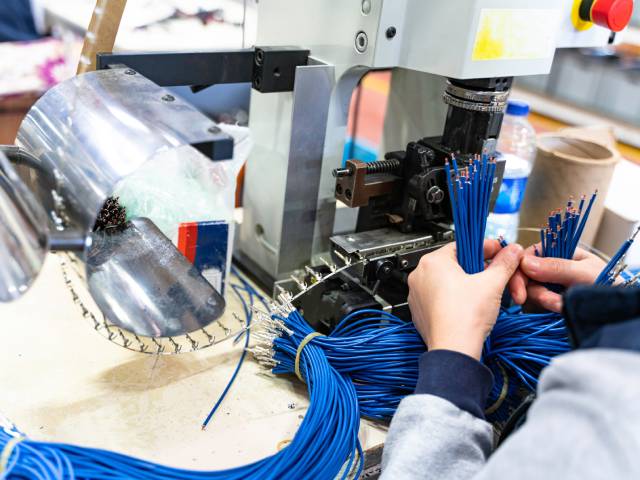

Crimping tools are indispensable for electricians and manufacturers, allowing for the creation of solid connections between wires and terminals. Furthermore, the right crimping tool ensures a connection can handle the intended load. However, with the rise of sophisticated equipment and technology comes a choice between manual and automatic crimping tools. For those looking to learn more about each option and how they compare, here are the pros and cons of manual and automatic crimping tools.
Manual crimping tools have been the tried-and-true option for electricians for generations. They require physical force from the user to crimp connectors and terminals. Their primary advantage lies in their simplicity and reliability, and they’re less expensive than their automatic counterparts. They are also portable, requiring no power source other than human force.
However, the quality of the crimp greatly depends on the strength and skill of the user, which can lead to inconsistent results. Prolonged use can also result in operator fatigue, which further impacts the quality of crimps over time. Manual tools may not be the most efficient choice for projects requiring a high volume of crimping.
Automatic crimping tools, powered by batteries or electricity, offer a more consistent, less labor-intensive solution. They deliver precise crimps with minimal effort from the user, drastically reducing the risk of injury or mistakes. These tools frequently come with presets and adjustments that allow for a wide range of crimp sizes and types, making them versatile for various applications.
On the downside, automatic crimping tools are more expensive upfront and require ongoing maintenance, as well as a reliable power source. Additionally, electricians must learn valuable skills, including knowing how to inspect their automatic crimping machines and conduct proper maintenance, in order to become machine operators. These machines are also generally bulkier and less portable than manual tools, which could be a drawback in some field applications.
Regarding cost, manual crimping tools are undeniably more cost-effective in terms of initial investment and maintenance. However, automatic tools often come out on top when considering efficiency and accuracy, provided they are correctly maintained and used.
In real-world applications, manual crimping tools excel in environments where portability is key and the work volume does not justify the investment in an automatic tool. On the other hand, automatic crimping tools are ideal for mass-production environments where speed, efficiency, and consistency are paramount.
When deciding whether a manual or automatic crimping tool is ideal for you, carefully consider the pros and cons of each option and how they might affect your project. An automatic crimping tool is likely a worthwhile investment if you regularly work on large projects. Meanwhile, having a quality manual crimping tool on hand is beneficial for smaller jobs or situations where portability and simplicity are best.
By understanding the advantages and limitations of each crimping machine, professionals in the electrical and manufacturing industries can make informed decisions that best suit their needs, ensuring reliable and high-quality connections every time.
24World Media does not take any responsibility of the information you see on this page. The content this page contains is from independent third-party content provider. If you have any concerns regarding the content, please free to write us here: contact@24worldmedia.com

Why You Need To Improve Drainage on Your Property

Essential Tips To Shield Your Car Windows From Damage

Warehouse Optimization Tips To Improve Performance

How High-Humidity Climates Affect Pressure Gauges

How Is Global Health Improving Year After Year

Ways That You Can Make Your Land More Useful

Essential Materials Used in the Construction Industry

A Look Into 3 Aspects of Maintaining Wind Turbines

Key Factors To Know Before Using IoT Solutions

Avoiding Hazards: How Vehicle Manufacturers Keep People Safe